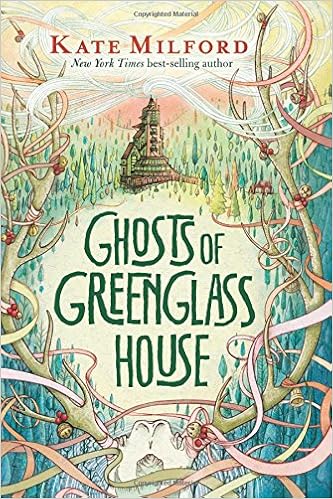 I'm pretty sure I have never actually recommended a non-fiction book to someone. So deep runs my love and admiration of fiction.
I'm pretty sure I have never actually recommended a non-fiction book to someone. So deep runs my love and admiration of fiction.
That being said, I'm going to do the unthinkable, and highly recommend this book (by many-award winning children's author, Katherine Paterson.) So many things about this book were inspiring and encouraging to me....as a mother, as an aspiring author, as a Christian, and as someone who thinks of life as The Great Story Marketplace.
In the introduction, she was clear that this is not a memoir. (After all, she had promised herself to never write a memoir.) But she also realized that, with the advent of a dishwasher in their home, her children had ended up missing out on hours of family history storytelling. So she wrote these stories--snapshots of her different lives, in China and America and Japan, in school, working, single, married, the modern award-winning author, and most recently, widow.
As an author, it seems that she really started writing in earnest while she had three small children in her home. (My situation right now.) She mentioned that she started by taking a class or two and was trying to write some poetry every day. And then she thought, if she could just write a chapter a week, she'd have a whole book by the end of a year! (Which makes sense to me.) So it has been inspiring, realizing that it's ok--even good!--to start small, to practice being faithful in writing as an exercise of skill and brain power. And so, since I have children who love poems, and I have some interest in writing poems for them, Katherine Paterson has encouraged me to try writing a poem every week.
Katherine Paterson has been surrounded by Presbyterian ministers. (Her father was one, and she married one.) As a child, she grew up in war-torn China. An incredible prospect she presented: this faithful minister (her father) with his wife and five children, during the time when the Japanese were invaded China and committing unspeakable atrocities among the people. The threat of rape and murder of his entire family was very real. Twice they had to flee China, and when she got to America, Katherine felt that this was the inhospitable, foreign country. Between the story of her father, Maud Henderson (another missionary), and her own story of serving in Japan, I was blown away and humbled by the truly selfless and courageous love demonstrated toward the heathen people of China and Japan. As she wrote of her own journey toward Japan, Katherine mentioned that her fear and distrust of the Japanese ran deeply inside her from her childhood days in China. An yet, she felt that God was calling her to Japan, she prepared to go, and as she considered her four years there, she said that she wished everyone could "have a chance to be loved by the people they thought they hated." In similar fashion, Maud Henderson's humility and faithfulness cuts deeply in astounding ways. Her sacrifice and courage in protecting the daughters of China (hundreds that she cared for and raised in her home) as a single woman, amidst the terrors of Japanese occupation; my heart was wrenched once and again, and I felt that my own love was weak and pitiful in comparison. It's a stunning example of James' exhortation, "True religion that is pure and undefiled before God the Father is this: to visit orphans and widows in their distress and to keep oneself unstained from the world."
As a mother, I found great encouragement both in her desire to parent well, and in the unmistakable fact that occasionally she didn't. Living in a place were hyper-sensitive "helicopter" parents are the norm, someone who lets their kids climb anything and everything and run around barefoot in 40 degree weather is bound to stick out like a sore thumb. I know I make some mistakes as parents, but my kids are happy and healthy, energetic and imaginative, and (I hope) are learning that life isn't about getting just what they want. Which, incidentally, is exactly what I've been shooting for. So as Katherine Paterson revealed some of stories she has stumbled upon (the ones her children would "never want their mother to find out"), there's a bit of encouragement there to know that those stories will be in every family. And all we can do as we seek the Lord is parent the way we see fit, and trust that God is the one who keeps our children happy, healthy, and faithful.
There is so much more. But I think this is enough to give you a sense that, whether it's just to indulge in some interesting family stories of a world-famous (and completely admirable) author, or to be truly inspired in some area of life, Stories of My Life should be near the top of your 2019 to-read list!




